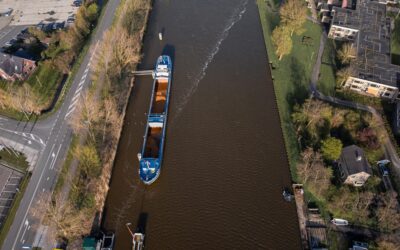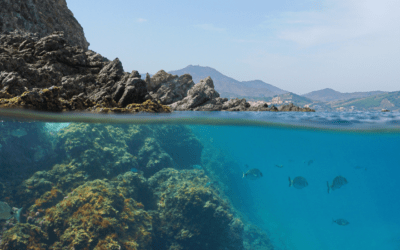Globally, water systems face a variety of critical threats, such as extreme weather events, saltwater intrusion, and pollution. Strong international policy is essential in combating and preventing these issues. While the EU’s Water Framework Directive highly regulates water quality in European waters, there is still an urgent need to include macroplastics as water pollutants for a more comprehensive strategy against water pollution. To understand this complex legislative force field, we must first grasp the issue of water pollution and its causes.
By Teagan Prawmanee Intaralib
Water pollution: cause and effect
Water is essential to all life, from humans and animals to entire ecosystems. Human activities are dependent on water, whether in agriculture, industrial activities, or for daily consumption and sanitation. Our activities create wastewater and release excessive chemicals and substances into the environment, contaminating various water sources. Water bodies, like streams and rivers, are polluted through water runoff, sewage outflow, or through improper waste management.
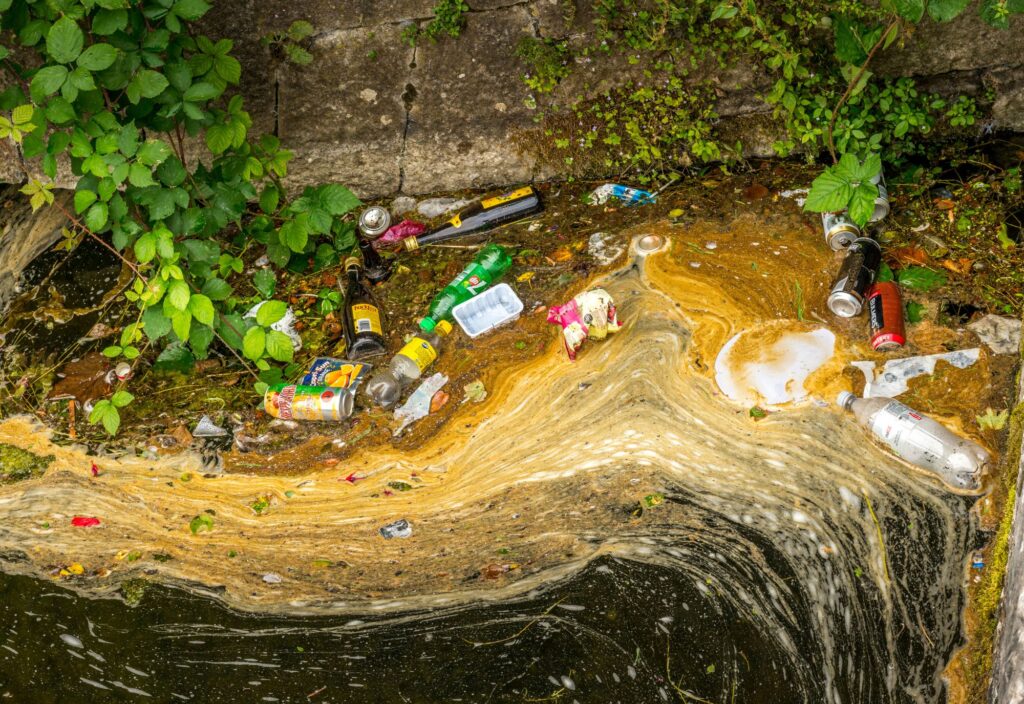
Water pollution has immense impacts on the environment and human health. It can cause ecosystem imbalances, disrupt the food chain, and destroy aquatic species’ natural habitats, leading to biodiversity loss and environmental degradation.
According to the UN Environment Programme, water quality can be classified into four categories; potable water, palatable water, contaminated (polluted) water, and infected water. [1] Several parameters need to be measured to establish the water quality, especially for drinking water. Unsafe water and inadequate access to clean water lead to many health risks and even death. [2]
Pollution in freshwater sources is extremely concerning as freshwater is scarce and under intense stress from climate change and an exponential increase in demand from rapid urbanisation. [3] Access to clean water is essential to human development, therefore it’s important to maintain the availability and quality of these resources. [4] This is seen through Goal 6: Clean Water and Sanitation for All, one of the UN’s Sustainable Development Goals (SDGs), aiming to ensure the availability and sustainable management of water and sanitation for all. [5]
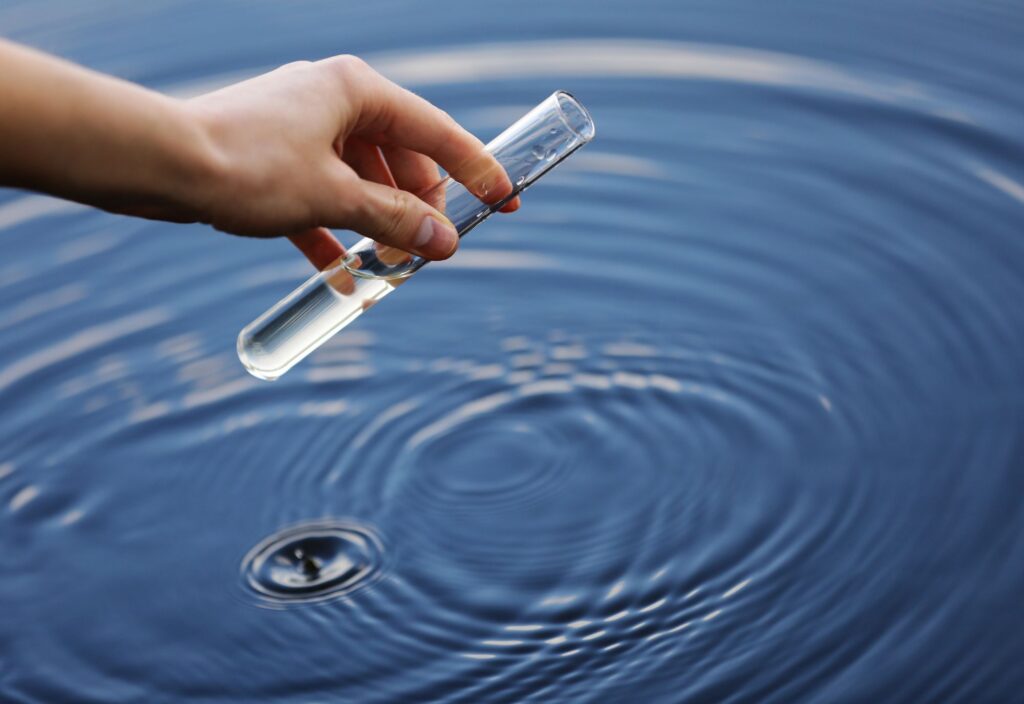
International policy to combat water pollution crises
While water quality and access to fresh water are of global concern, water quality standards differ across the globe. The highest level of regulation is often on a national level even though water pollution issues are transboundary by nature.
The European Union (EU) is a positive exception in this regard. Since 2000, the EU adopted the Water Framework Directive (WFD) as the primary legislation for water protection. This regional policy allows for an integrative approach to water management that covers inland, transitional, and coastal surface waters as well as groundwaters.
According to the WFD, the main water pollutants include organic and inorganic substances, metals, arsenic, biocides, and materials in suspension. This indicative list is accompanied by a substance watch list, which currently includes some microplastic substances.
However, the water pollutants included in the WFD do not fully reflect the current status of polluted freshwater sources. Macroplastics are the main contributors to the riverine plastic pollution problem by mass, posing serious environmental threats. [6]
Even with the highest standards of waste management or the best prevention plans, plastics can still leak into the environment from wind and other weather events or through sewage systems.
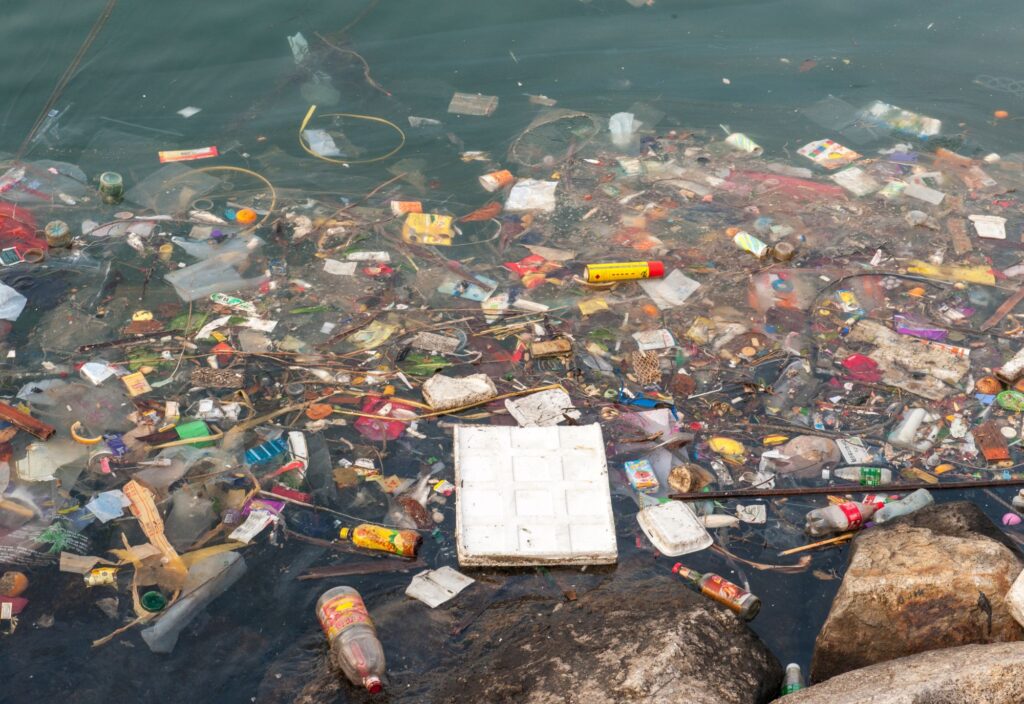
Including macroplastics as water pollutants
There is a crucial need to recognise macroplastics as water pollutants in international policy. Macroplastics continue to degrade in the environment into microplastics and nanoplastics with worsening environmental effects. The recognition of macroplastics as a pollutant in the policy will ensure clear targets for Member States to achieve in managing plastic pollution in their water sources. At the same time, it stimulates collaborative management of transboundary plastic pollution by governments and cities.
To achieve the WFD’s objectives of reaching good chemical and ecological status for surface water by 2030, we strongly advocate for the inclusion of macroplastic in the Directive’s Watch List. As plastic pollution is often transported across borders via waterways, the joint approach to plastic pollution is vital. Each national institution, that is in charge of ensuring plastic-free freshwater systems in a certain region, needs a proper mandate and deserve access to the right tools and budgets to take effective action in their rivers.
The Great Bubble Barrier aims to tackle plastic pollution in rivers, by installing our Bubble Barrier technology in pioneering cities, capturing plastic waste close to the source. By monitoring the plastic captured and through advocacy, we work towards stricter regulations to ensure rivers will become plastic-free once again.
References
[1] United Nations Environment Programme, n.d., FAQs on Water Quality, available at https://www.unep.org/explore-topics/water/what-we-do/world-water-quality-alliance-wwqa-partnership-effort/faqs-water#:~:text=Water%20quality%20can%20be%20classified,)%20water%2C%20and%20infected%20water
[2] World Health Organization, 2023, Unsafe water, sanitation, hygiene: a persistent health burden, available at https://www.who.int/news/item/05-09-2023-unsafe-water–sanitation-and-hygiene–a-persistent-health-burden
[3] Strokal, M., Bai, Z., Franssen, W. et al., 2021, Urbanization: an increasing source of multiple pollutants to rivers in the 21st century, available at https://doi.org/10.1038/s42949-021-00026-w
[4] World Health Organization, n.d., Water Safety and Quality, available at https://www.who.int/teams/environment-climate-change-and-health/water-sanitation-and-health/water-safety-and-quality
[5] United Nations, n.d., Goals 6, available at https://sdgs.un.org/goals/goal6
[6] Al-Zawaidah, Ravazzolo & Friedrich, 2021, Macroplastics in rivers: present knowledge, issues, and challenges, available at https://doi.org/10.1039/D0EM00517G


